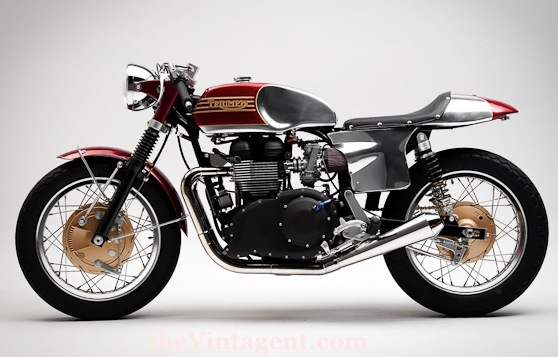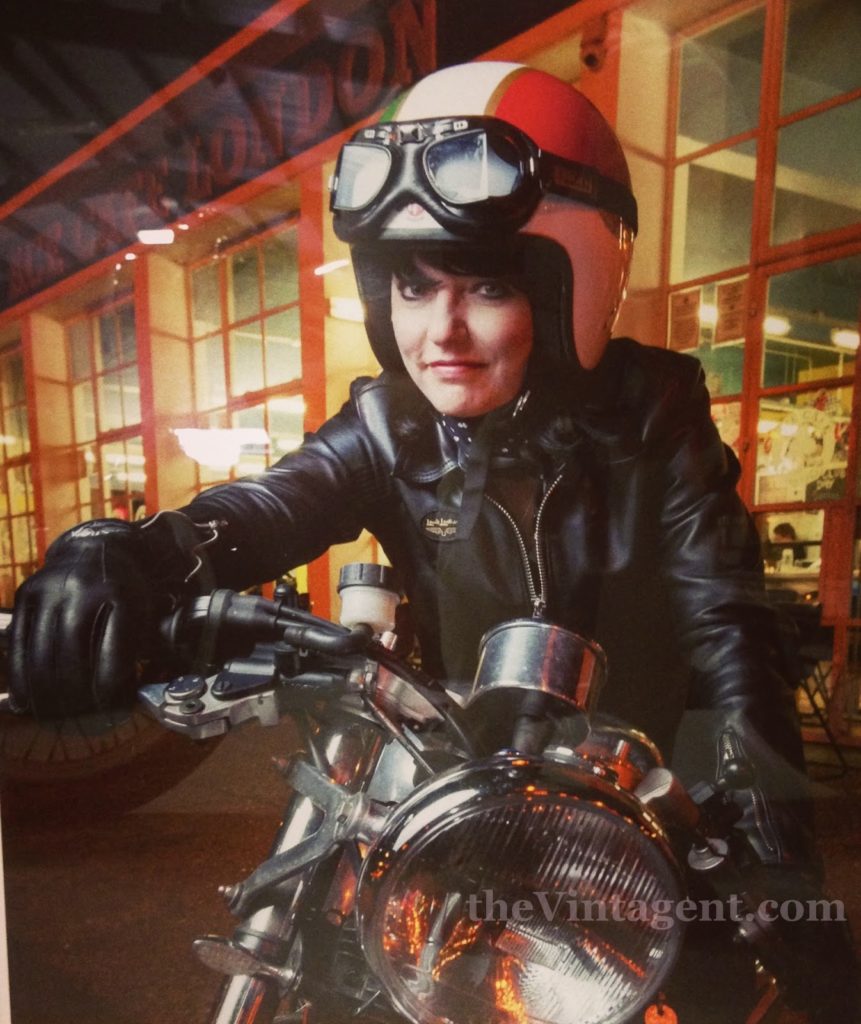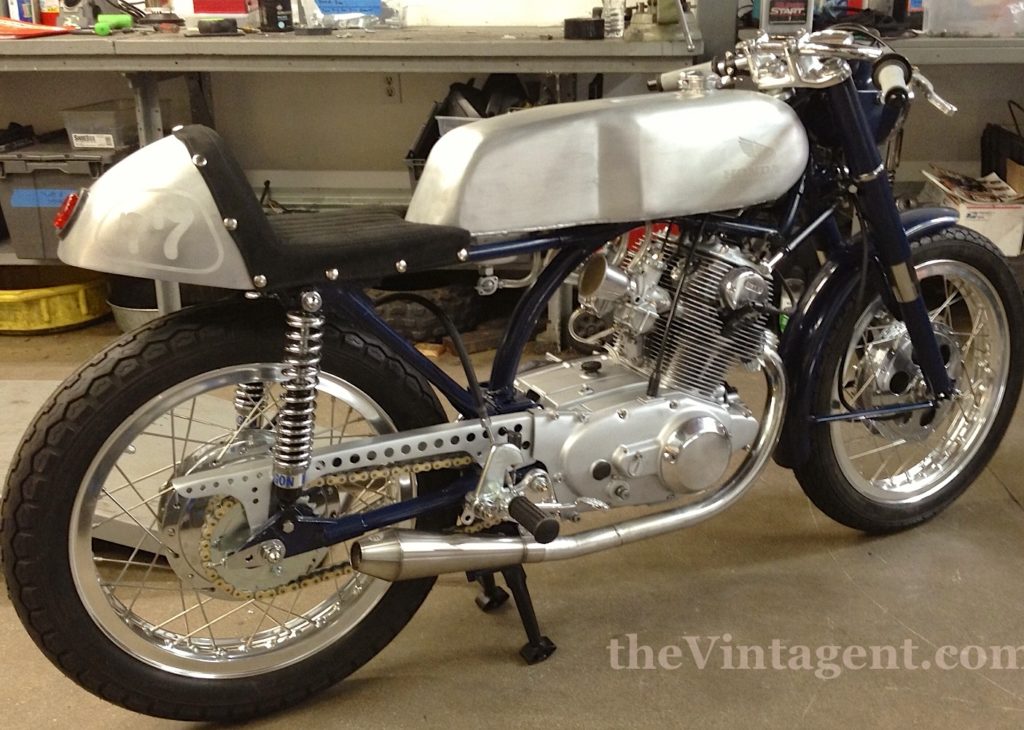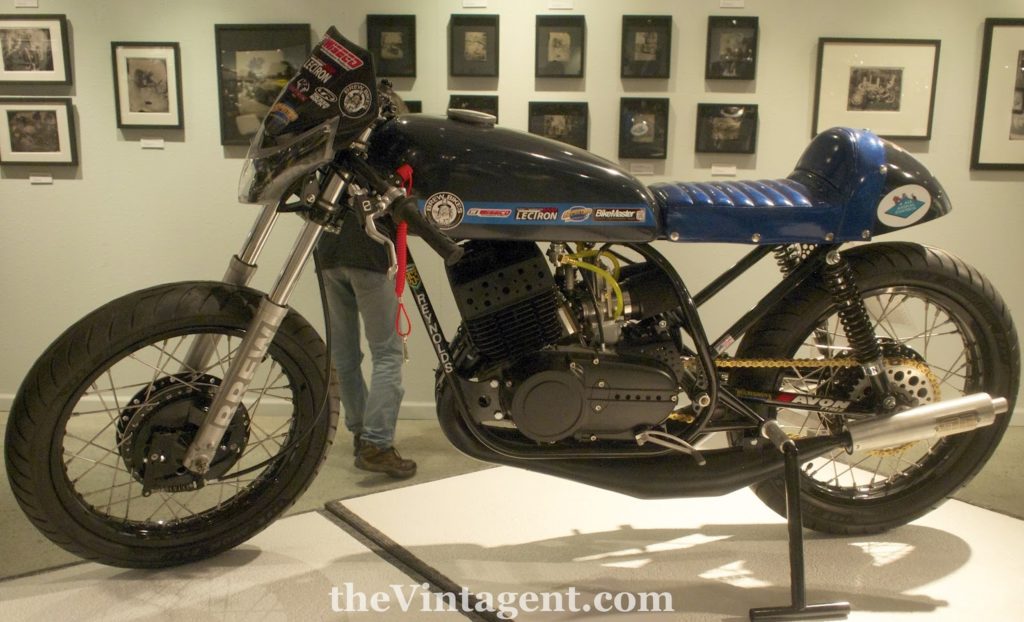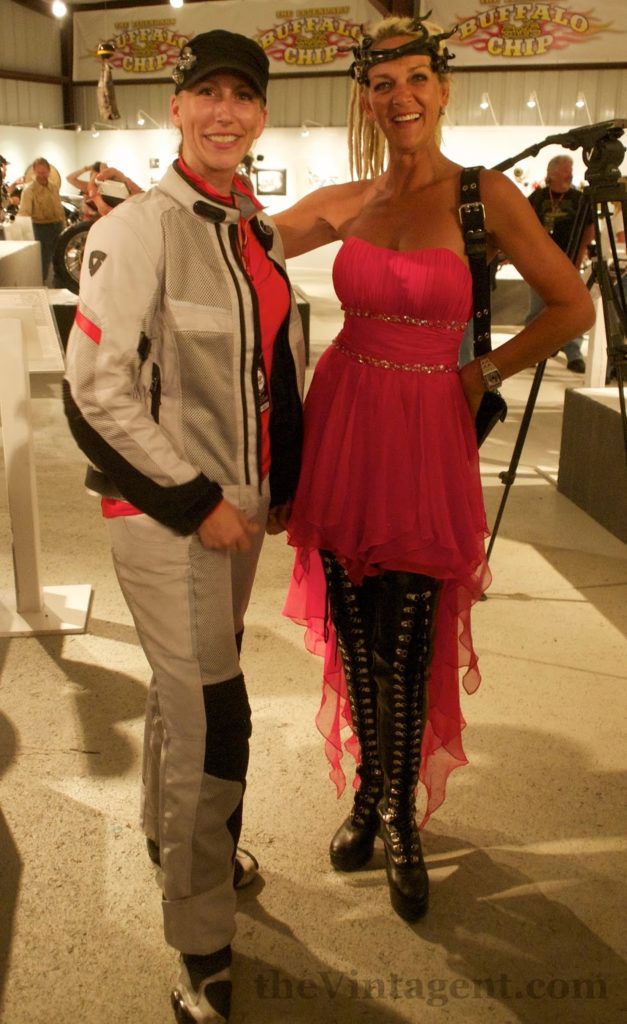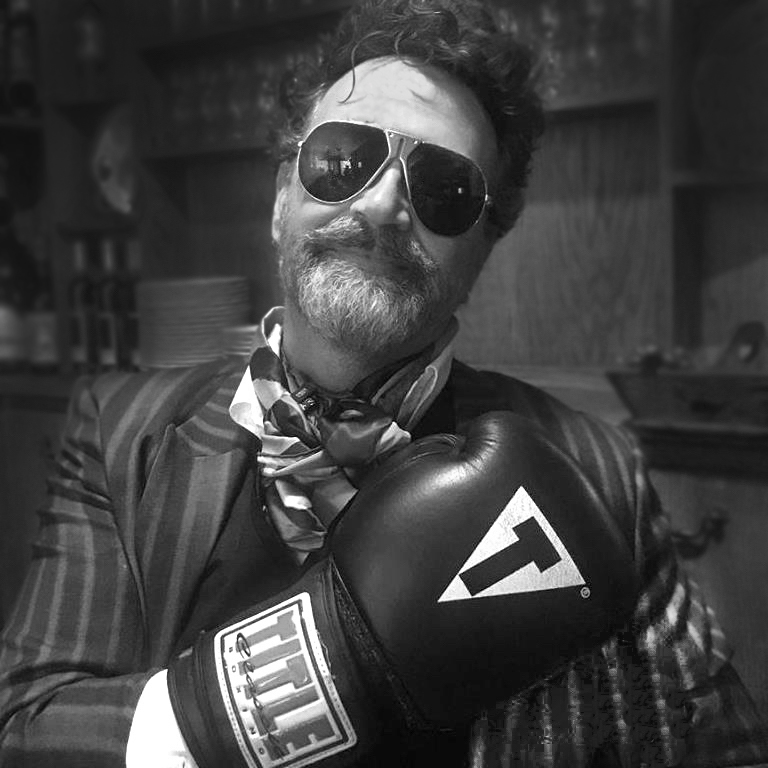
Photographer Michael Lichter, a legend in the Harley-centric world of Sturgis and V-twin ‘custom lifestyle’ books and magazines, has a warehouse-size exhibit hall dedicated to his ‘Motorcycles as Art’ exhibit, held annually at Sturgis since 2000. The exhibit was off our radar until we met Michael on the 2012 Motorcycle Cannonball Endurance Rally; he’s the official photographer for the event, and has ridden backwards across the USA several times now! In early 2013 Michael asked if we could help source vintage Café Racers for his 2013 Sturgis show, to be called ‘Ton Up! Speed, Style, and Café Racer Culture’.
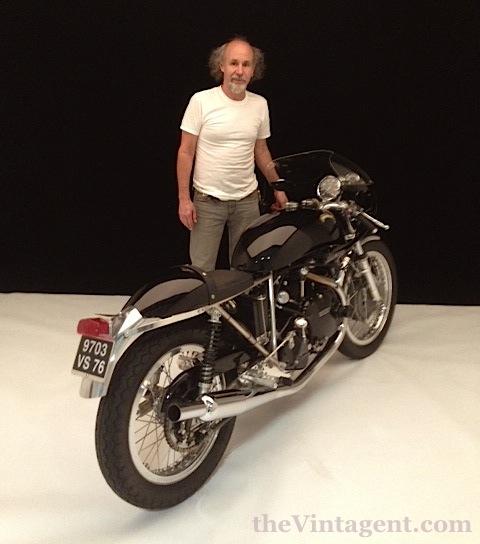
We were immediately on board, and suggested a formal collaboration as co-curators, as Café Racers were our first vintage love. Paul d’Orléans’ clip-on and rearset credentials go back to the 1980s, when he co-founded the ‘Roadholders’ Café Racer club in San Francisco, and he’s owned a very long list of classic Café Racers, and covets his 1966 Velocette Thruxton as his ‘you’ll take it from my cold dead hands’ bike.

What was Michael’s reasoning for bringing a bunch of non-American canyon carvers to the mighty Bagger Bacchanal? “I’ve been watching the explosion of interest in Café Racers over the past few years on the internet and TV, and I see parallels with the Harley custom world – the personal expression, the quality of the work – and it seemed a good, if controversial, subject for this year.” The absolute explosion of interest in the Café Racer and ‘CB’ Custom world since 2010 has overlapped with the best of the Harley custom world, and plenty of builders known for Choppers and Bobbers are now making performance-oriented motorcycles which can be ridden around corners.

In fact, when word leaked of the Café Racer theme for Michael’s 2013 exhibit, we found ourselves turning away well-known shops who were eager, sometimes even desperate to be included in ‘Ton Up!’ It was overwhelming actually, how many shops proposed building machines just for Sturgis: I had underestimated the importance of Michael Lichter’s show to the builders themselves. In the end 7 bikes were built expressly for ‘Ton Up!’; they ranged from Sportster to Triumph to Victory to an RD Yamaha, with stock or home-built chassis, from visually fairly ‘standard’ to completely radical and unique, from the factory-slickness of Zach Ness to the hand-hammered and sticker-covered scratcher from ‘Brewdude’.

We collared our Vintage pals for prime examples of 1960s-70s Café Racers, from Herb Harris’ immaculate ’62 BSA DBD34 Gold Star Clubman and Mark Mederski’s original-paint ’70 Velocette Thruxton, to a totally killer all-black Godet-Egli-Vincent Black Shadow, loaned by Mars Webster. The 13 ‘period’ Café Racers laid the exhibit’s groundwork, as the starting point for a show covering 50 years’ continuous history for the genre. The style of motorcycle characterized as Café Racer did not begin or end during the ‘Ace Café’ era, but is an impulse as old as motorcycling – the desire for a Racer on the Road. As a touchstone machine, we included Mark Mederski’s original-paint 1962 Norton 30M Manx, the last year of Bracebridge Street production of this seminal racer.

The Manx was hugely successful on the track, but was equally remembered for the perfection of its style, which is emulated on newly built Café Racers today, whether the bike underneath is British or Japanese. The continued evolution of the clip-on brigade included a pair of divergent Ducati round-case 750s; the Fuller Hot Rods Duc being a pared-down and slick traditionalist, and Shinya Kimura’s ‘Flash’ representing the far end of the artistic expression spectrum.

Another pair of machines, separated by 4 decades, showed the enduring strength of Café Racer style. Willie G Davidson pulled from his personal garage the ‘Serial #1’ HD XLCR, a landmark machine and a masterpiece from the legendary former Head of Styling at HD. In some kind of ‘first’, Willie G’s replacement at Harley, Ray Drea, on hearing his former boss would include the #1 XLCR, immediately started building his own all-Harley Café Racer, based on an XR1000 engine. The resulting ‘XR Café’ is a drop-dead gorgeous Milwaukee marvel, with completely uprated suspension, brakes, carbon fiber wheels, and hand-made aluminum bodywork which closely echoes the XLCR lines; a total performance-oriented street racer, which inherited the tough-guy good looks of its spiritual father, but kicks butt all over Dad’s spec sheet. It’s so good, I asked to buy it – but Willie G. beat me to it!

The response to ‘Ton Up!’ by Sturgis regulars, both industry pros and tipsy campers, was universally ‘WOW’. Even though we were beat from hand-placing 35 bikes on their plinths, and hanging over 200 pieces of art on the walls from 12 photographers and painters, our reaction was the same. Remarkably, I can’t recall a museum-quality exhibit of Café Racers, anywhere on the planet, until seeing ‘Ton Up!’ set up, lit, and filled with nearly 1300 people on opening day.

Not a negative peep was heard about the show’s content and non-Harley focus, and dudes covered with wrinkled, sun-faded tattoos and Rip Van Winkle beards were as fascinated by the Docs Chops’ Yamaha Virago(!) as by the super-tough Brawny Built H-D Sportster. Many times I heard ‘this show could travel anywhere’, and while moving the whole show is prohibitively expensive, luckily Michael Lichter and Paul d’Orléans collaborated on a book based on the exhibit. Motorbooks International changed the name to ‘Cafe Racers: Speed, Style, and Ton Up Culture’, and the book is in print in several languages (English, French, and German so far), and the text by Paul explores the real history of the ‘racer on the road’ impulse, and the nails the date of the first factory Café Racer to 1914! You can buy it here.
















